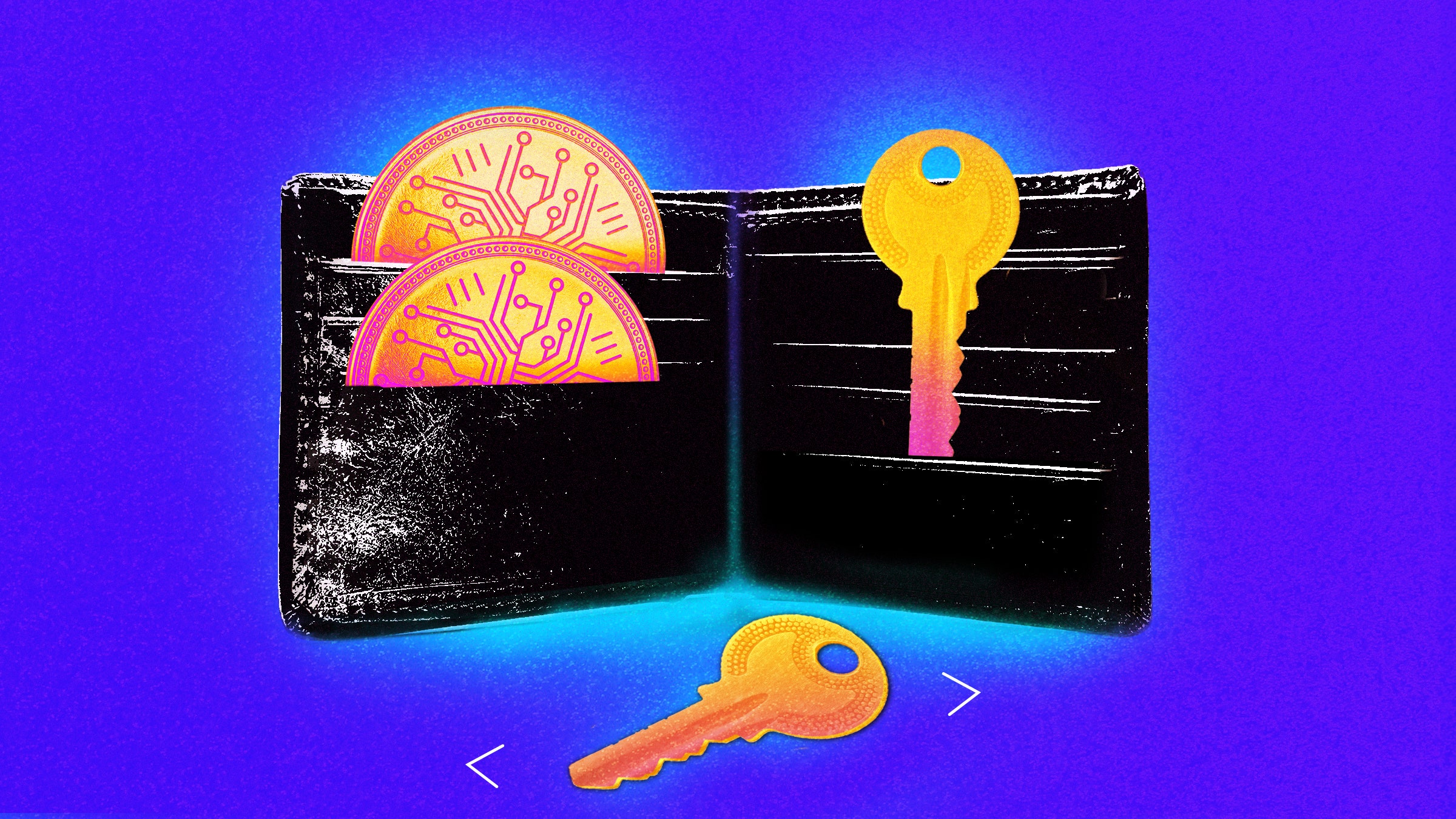Where is Bitcoin Blockchain Stored: Uncovering the Secret Location

Bitcoin blockchain is stored on a decentralized network of computers. The stored information is spread across different nodes, ensuring a secure and transparent ledger of transactions.
Bitcoin is a digital or virtual currency that operates on a decentralized network of computers collectively known as the blockchain. The blockchain stores all information related to bitcoin transactions across a distributed network of nodes, which means that there is no centralized database for storing this information.
Instead, the information is spread across a network of nodes that work together to ensure the integrity and security of the system. This decentralized network makes it difficult for hackers or malicious actors to manipulate or alter the stored data, making bitcoin a secure and transparent way of exchanging value online. Thus, the bitcoin blockchain is stored on a distributed network of computers, ensuring its safety and reliability.

Credit: www.protocol.com
Understanding The Concept Of Blockchain Storage
Bitcoin’s blockchain is a revolutionary technology that has taken the world by storm. However, there is a great deal of confusion surrounding the question, “where is bitcoin blockchain stored? ” The answer is not as straightforward as you may think.
In this blog post, we will explore the concept of blockchain storage and delve into the various techniques used to store the bitcoin blockchain.
Explanation Of How Blockchain Stores Its Data
Blockchain technology was designed to store data in a decentralized and secure manner. Every transaction that occurs on the bitcoin network is recorded and verified by nodes scattered across the globe. The data is stored in blocks that are linked together in a chain, hence the name “blockchain”.
The blockchain is stored in a distributed network of computers that are known as nodes.
The data is secured using complex cryptography that makes it practically impossible to alter any previous transactions. The decentralized nature of blockchain technology makes it highly resilient to any attempted cyber attacks.
Types Of Blockchain Storage Techniques Implemented
There are two primary methods of storing blockchain data. These are:
- Full nodes: Full nodes store a complete copy of the bitcoin blockchain on their local machine. This means that full nodes are responsible for verifying every transaction made on the network. They are essential for the security and integrity of the blockchain.
Some of the pros and cons of using full nodes include:
- Pros
- High level of security
- Lower risk of data loss
- Ability to verify your own transactions
- Cons
- Heavy resource usage on machines
- High storage requirements
- Synchronization time with the blockchain
- Light nodes: Unlike full nodes, light nodes do not store a copy of the blockchain. They rely on other full nodes to verify transactions on their behalf.
Some of the pros and cons of using light nodes include:
- Pros
- Low storage requirements
- Fast synchronization with the blockchain
- Simple setup
- Cons
- Less secure
- Higher risk of data loss
- Inability to verify your own transactions.
Pros And Cons Of Each Methodology
The debate over which method is best for storing the bitcoin blockchain is ongoing. Full nodes are considered the most secure because they store a copy of the entire chain. However, they are resource-intensive and difficult to set up for the average user.
Light nodes, on the other hand, are faster and easier to set up, but they are less secure because they rely on other nodes to confirm transactions.
It’s worth noting that there is a third method of storing blockchain data known as pruned nodes. These nodes store a partial copy of the blockchain and delete transaction data once it is no longer needed.
The method of storing the bitcoin blockchain depends on your individual needs and resources. Full nodes are recommended if you have the technical expertise and hardware requirements to set them up. Light nodes are a good option for users who are new to bitcoin and have limited resources.
Finally, pruned nodes provide an excellent balance of security and efficiency.
Bitcoin Blockchain Data Storage Location
Overview Of The History Of Bitcoin Blockchain Storage
Bitcoin is the first-ever successful cryptocurrency to run with blockchain technology. When it was first developed, bitcoin’s blockchain was stored on every computer that participated in the network. Satoshi nakamoto, the creator of bitcoin, released the first client in 2009, which contained the initial bitcoin blockchain data.
However, this was not an optimal solution, as it quickly consumed a lot of memory space on a user’s computer.
How The Blockchain Data Is Stored Today
Nowadays, bitcoin blockchain data is stored in thousands of computers globally, increasing the network’s security. These computers, also known as nodes, are connected to the internet and work together to maintain the ledger. They synchronize their operation to verify new transactions, update the blockchain, and confirm the record’s integrity.
Moreover, each node contains a copy of the entire blockchain, ensuring that no fraud can occur in the network.
Impact Of Storage Location On Bitcoin Transaction Speed And Accuracy
Bitcoin’s blockchain storage has a crucial impact on transaction speed and accuracy. The transaction speed depends upon the number of nodes in the network and the storage location of the blockchain. Ideally, nodes closer to the physical location of the user make transactions faster.
However, nodes that contain a copy of the blockchain can verify the legitimacy of transactions more effectively as they have access to the complete ledger and can check the transaction history.
The storage of bitcoin’s blockchain has come a long way since the beginning, with the blockchain now being stored on thousands of nodes globally. This has helped to increase the network’s security and has a significant impact on transaction speed and accuracy.
With the current system, the faster the nodes communicate with each other, the faster the transactions will be confirmed and recorded in the blockchain.
Security Measures And Concerns Regarding Blockchain Storage
Bitcoin is the world’s first decentralized digital currency, but where is the bitcoin blockchain stored? Let’s unveil this secret location and scrutinize the security measures involved in blockchain storage along with the cybersecurity concerns and risks related to it. We will also discuss recent data breaches and their implications on blockchain technology.
Explanation Of The Security Measures Implemented In Blockchain Storage
Blockchain technology secures its data in the following ways:
- Decentralized architecture: Blockchain is decentralized, meaning multiple copies of data are stored across the network in different locations, making it difficult for hackers to carry out a coordinated attack.
- Cryptography: Blockchain uses advanced encryption algorithms to authenticate data and secure communication between network nodes.
- Consensus mechanism: In blockchain, all participating nodes must agree on transaction validation to add data to the blockchain. This mechanism ensures data integrity and prevents unauthorized modifications.
- Private keys: Users hold their private keys, which are utilized to access their crypto assets and sign transactions digitally.
Cybersecurity Concerns And Risks Related To Blockchain Data Storage
Blockchain technology, despite its security strengths, is not immune to risks. Some potential cybersecurity concerns in blockchain data storage include:
- 51 percent attack: It refers to a type of attack where 51% of the network’s computing power is controlled by a single entity, allowing them to control the network and cause harm.
- Smart contract vulnerabilities: Smart contracts are code stored on the blockchain, and they can be exploited if they are not secured correctly.
- Phishing attacks: Phishing attacks, especially targeting users’ private keys and passwords, can lead to unauthorized access to users’ crypto-asset holdings.
- Malware attacks: Malware such as ransomware and keyloggers can steal user’s private keys, allowing the attacker to control the user’s funds.
Recent Data Breaches And Their Implications On Blockchain
Recent data breaches like the binance hack and the kucoin hack raised concerns about the security limitations of blockchain. These breaches proved that blockchain technology, like any other technology, is not completely immune to hacks. However, blockchain’s decentralization and transparency features allowed the community to detect and track the stolen funds more efficiently.
As blockchain storage evolves, it will be necessary to keep implementing new security measures to prevent hackers from exploiting system weaknesses and to minimize the risk of cryptocurrency hacks and attacks.
While the blockchain technology is secure, it is not infallible, and there are potential risks that must be taken into account. Knowing about these risks, cybersecurity measures, and recent data breaches will help you make informed choices regarding cryptocurrency investments.
The Future Of Bitcoin Blockchain Storage
Since bitcoin’s creation in 2009, the blockchain technology that underpins it has developed significantly. When satoshi nakamoto launched bitcoin, the blockchain was relatively small, with just a few kilobytes of data. Today, the blockchain has grown to an immense size, containing over 350 gigabytes of data.
But where exactly is this vast amount of data stored? We delve deeper and highlight the future of bitcoin blockchain storage.
Upcoming Innovations In Blockchain Technology And Data Storage
As bitcoin’s popularity has grown, so has the need to store blockchain data more efficiently and securely. Innovations in blockchain technology and data storage aim to address these demands. Below are some upcoming innovations that are worth noting:
- Sharding: An upcoming feature of ethereum aims to address the scalability issues that arise with blockchain technologies. Sharding divides the blockchain into sections to make verification faster and reduce node requirements.
- Sidechains: The concept of sidechains is simple; it involves creating an individual blockchain that runs parallel to the main blockchain. The goal is to allow experimentation with different consensus mechanisms, without any risk to the primary blockchain.
- Plasma: Plasma is a proposed solution to blockchain scaling, which is derived from a generalized form of sidechains. It primarily works by creating mini-blockchains that still interact with the main blockchain, thus reducing the completion times for transactions.
Possibilities Of Decentralized Storage Methods
Blockchain technology is built on principles of decentralization and transparency. Hence, it is only natural that data storage for the blockchain should also be decentralized. There are several possibilities for decentralized storage of the blockchain:
- Inter-planetary file system (ipfs): Ipfs is designed to be the next generation of the internet’s file system. Using ipfs to store blockchain data would increase its security and decentralization significantly.
- Storj: Storj is a decentralized cloud storage platform that uses blockchain technology to enable peer-to-peer file transactions. Using storj for blockchain storage would allow data to be safely distributed across the network, rather than relying on a single centralized server.
Impact Of These Developments On The Future Of Blockchain Data Storage
The above developments provide significant advantages for bitcoin blockchain storage. Decentralized storage methods, such as ipfs and storj, offer greater security and availability. Furthermore, the scalability solutions that will come with sharding, sidechains, and plasma could mean that blockchain transactions process faster, cost less, and use less processing power.
Overall, we expect these innovations to have a considerable impact on bitcoin blockchain data storage, creating a safer, more efficient, and scalable network than ever before.
Frequently Asked Questions For Where Is Bitcoin Blockchain Stored
Where Is The Bitcoin Blockchain Stored?
The bitcoin blockchain is stored on all the nodes of the network, which are computers worldwide. It can also be downloaded and stored locally on an individual’s computer or external hard drive.
How Is The Blockchain Data Secured?
The blockchain data is secured using complex cryptographic algorithms that make it virtually impossible to alter or hack. Each block is connected to the previous one, forming an unbreakable chain.
Does The Blockchain Require A Lot Of Storage Space?
The bitcoin blockchain’s current size is over 350gb, and it continues to grow. Therefore, it may require a lot of storage space, especially for individuals who wish to download and store it locally.
Is The Bitcoin Blockchain Publicly Accessible?
Yes, the bitcoin blockchain is a public ledger, and anyone can view the data in it. However, personal information is not disclosed since users are identified only by their public keys.
Can The Bitcoin Blockchain Be Deleted?
The bitcoin blockchain cannot be deleted as it is distributed across multiple nodes, making it virtually impossible to erase. Each node stores a copy of the blockchain, ensuring its integrity and security.
Who Regulates The Bitcoin Blockchain?
The bitcoin blockchain is not regulated by any central authority. Instead, it is monitored by the network’s participants who validate transactions and add blocks to the chain through a consensus mechanism known as proof of work.
Conclusion
As bitcoin gains more popularity and acceptance, the curiosity of where it stores its blockchain becomes more relevant. After reading this article, you now have a comprehensive understanding of where the bitcoin blockchain is stored. The bitcoin blockchain is stored on many individual computers known as nodes, which work together in harmony to maintain the integrity of the system.
You also learned that the blockchain consists of blocks that contain transactions, which are verified by miners. As a result, any attempts to manipulate or tamper with the blockchain are almost impossible since the system is decentralized and secure. Bitcoin has revolutionized the way we view money and has introduced a unique technology of storing data that is well beyond our current comprehension.
The future of blockchain technology looks bright, and it is exciting to see where it will take us.







